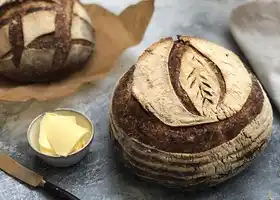Download Stashcook Now. Get the best meal planning app for your family.
White sourdough Recipe

Good Food
Master the art of making sourdough bread with our step-by-step recipe. Learn how to create a starter, levain and the loaf itself with our expert tips.
Ingredients
250g strong white bread flour , preferably organic or stoneground
1 tbsp sourdough starter (see above)
100g strong white bread flour , preferably organic or stoneground
levain (see above)
1kg strong white bread flour , preferably organic or stoneground, plus extra for dusting
20g fine sea salt
Method
1
2
3
4
5
6
7
8
9
10
11
12
13
Social
Email:
hello@stashcook.com© Copyright 2026 Stashbox Ltd. All rights reserved.